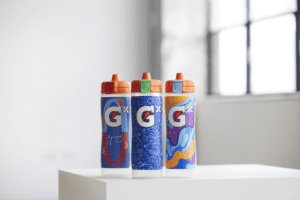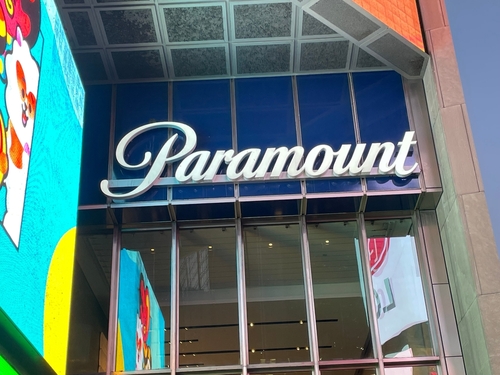Consumers are continuously changing the way they shop. They have high expectations for speed and convenience, they consult social media for ideas and inspiration and they’ve become very comfortable making transactions on mobile.
These dynamic shifts in consumer behavior are putting increasing pressure on brands and retailers to create the most innovative shopping experiences to stay competitive, attract new shoppers and foster loyalty among their existing customers. It’s already difficult to identify the shopping experiences that boost optimal sales and revenue, but it’s even trickier to understand whether consumers actually like or want these experiences in the first place.

To better understand how retailers are meeting customer expectations and more importantly, the areas where they are missing the mark, Bazaarvoice surveyed more than 400 brands and retailers and 2,000 consumers across the U.S., UK, France and Germany to identify the gaps between what shoppers want and what the industry is delivering. Here’s what we found:
Incorporating the right digital in-store experiences
Innovation and developments in virtual reality and augmented reality continue to make headlines and generate buzz, but blending digital experiences with physical retail is complicated. Though new technologies are flashy and impressive, it begs the question whether they enhance the customer experience or detract from it. Some retailers have introduced creative virtual reality features into their shopping experiences, like the ability to virtually try on outfits or visualize furniture in the home, but are consumers adopting and enjoying these new functionalities?
More on Customer Experience:
- Why Brand Experience Should be at the Center of Your Marketing Strategy
- Customer Engagement Vital for CMO Job Security: Report
When asked what they thought about digital in-store experiences, 48 percent of consumers said that virtual reality features are not important to them. In-home voice assistants, like Amazon Echo and Google Home are growing in adoption, but 65 percent of shoppers do not consider them important to the customer experience. Consumers do embrace digital enhancements in retail, but prefer technologies that simply add convenience and remove friction from the shopping experience. Half of respondents said it’s important or very important for retail stores to have convenient functionality like auto checkout, location-based mobile offers, and online ordering. Despite this, only 20 percent of retailers say they plan to bring digital in store and 55 percent are not at all focused on doing so, signifying a big opportunity for retailers to evaluate where and how they’d like to invest in new in-store technologies long term.
Delivering personalized experiences
Personalization is another area that retailers are prioritizing, but still trying to figure out. In fact, 91 percent of brands and retailers say that receiving personalized content, offers, and recommendations while shopping online will be significant to the customer experience, and 81 percent say that using customer data to personalize content modules and product recommendations is a top focus in the next 12 to 18 months. Our consumer survey found that shoppers appreciate personalized shopping experiences too; in fact, 51 percent of shoppers say a homepage that shows products they are looking for, or might be interested in, is useful.
Though both shoppers and retailers agree that personalization is effective and welcome, the problem lies in execution. Less than 20 percent of shoppers say the product recommendations they see are relevant and 38 percent say they won’t return to an online retailer that recommends products that don’t make sense for them. This indicates that brands and retailers have yet to crack the code on how to target their customers effectively.
Additionally, retailers must not mistake the need for better personalization with an overabundance of promotions and marketing emails. According to our survey, an overwhelming 90 percent of shoppers say that retailers should not send too many emails. Email is an important and useful tool, but brands and retailers must balance their send rates and consider whether their personalization tactics are relevant and meaningful to their customers.
Blending social media and e-commerce
It’s well-established that shoppers trust and rely on consumer-generated content (CGC), like ratings and reviews, questions and answers and visual content pulled from social media, when making their purchase decisions. In fact, 56 percent of consumers say it is important or very important to have this content available when shopping. In 2018, brands and retailers are putting an even greater emphasis on visual content in particular. Currently, 80 percent of brands and retailers report that they either have a visual CGC program, or plan to implement one in the next year, and 60 percent consider visual CGC a standard in e-commerce.
Given the popularity of visual content, social media is starting to emerge as a third shopping channel that bridges in-store and online shopping. There’s no question that consumers are spending more time scrolling through their social feeds and engaging with brands – 80 percent of Instagram users follow at least one business, 45 percent of online shoppers say they like or follow a brand on social media and 57 percent say they’ve purchased a product they heard about on social media. Companies undoubtedly understand that these platforms can be used to connect with their audiences and lift discoverability–81 percent of brands and retailers are prioritizing integrating social media and online shopping in the next year.
But brands and retailers are just starting to scratch the surface when it comes to implementing social commerce. Though social media usage and the influence of visual content is significant, currently, only 17 percent of consumers say being able to discover and buy products directly from social media is important. This could be because there are still layers of friction between the social media and e-commerce environments, or simply because shoppable social feeds are not ubiquitous yet. Social commerce is poised for growth over the next few years, but brands, retailers and social media platforms will need to figure out the right integrations that will enhance and optimize both the social and shopping experiences for the end user.
Retailers will always have to innovate and evolve, or risk getting left behind, but change and innovation just for the sake of it will not yield favorable results. Rather than replicating what the industry and competitors are doing, retailers should pay attention to what consumers are doing and desiring. Learning shoppers’ watering holes, the technologies and platforms they’re using, and their social and shopping behaviors is the key to producing convenient customer experiences that revolve around them.
Fortunately, with the heavy usage of social media, growth of mobile shopping activity, and a majority of brands and retailers prioritizing their CGC programs, there’s an abundance of feedback channels and tools that retailers can use to connect with shoppers, hear their opinions, and respond to them. There will always be differences between what shoppers expect and what brands and retailers deliver, but the first step to narrowing those gaps is listening to consumers, understanding their needs and meeting them where they are.
Sara Spivey is CMO at Bazaarvoice.




 Network
Network

